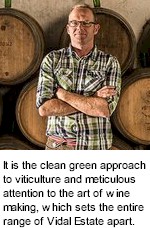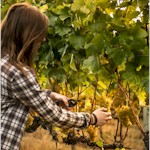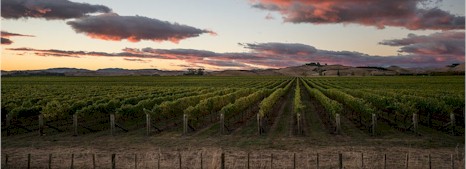


Hot summer days, a long growing season and free draining soils have helped Hawke’s Bay become one of the premier wine regions in New Zealand. Anthony Joseph Vidal was one of the first winemakers to appreciate the natural potential of the area. He established Vidal Estate in 1905 and his spirit of adventure coupled with a lifelong commitment to crafting classic, elegant wines remains an inspiration to this day. He was 22 years old when he arrived in New Zealand from Spain in 1888. His first eleven years were spent in Wanganui, working for his uncle, pioneer winemaker Joseph Soler. He then moved to Hawkes Bay where in 1905 he purchased a small property in Hastings.

Once the stables that occupied the site were converted into a cellar, Anthony set about planting some grapevines. It was from there he became one of New Zealand’s early wine innovators and his success led to expansion with further vineyard plantings in Te Awanga and then Te Mata. Today's Vidal Estate is a combination of old and new. Modern state of the art technology is used in conjunction with traditional winemaking techniques in the fermentations and maturations.
Vidal Estate sources grapes from New Zealand's second largest growing region, Hawkes Bay, including the world famous Gimblett Gravels. This area is defined by unique, free draining shingle soils and average temperatures up to three degrees hotter than most other areas in Hawkes Bay, resulting in complex and elegant red wines.
Characterised by high sunshine hours and diversity of landscape and soil types, the Hawkes Bay region has earned a reputation as one of the finest wine producing regions in the world, in particular for classically styled Merlot and Cabernet Sauvignon, Syrah, and rich Chardonnay with underlying elegance. Fruit is also sourced from vineyards located in Marlborough, New Zealand's largest wine growing region.

Vidal Estate is dedicated to environmentally friendly winemaking and sustainable winegrowing practices. This mindset allows Vidal Estate to contribute to New Zealand's clean, green image and increase quality assurance from vineyard through to the finished wine. Vidal Estate was a founding member of the Living Wine group, a small group of wineries who gained ISO 14001 certification in 1998, having achieved a globally recognised standard in environmental management systems. The winery is a member of Sustainable Winegrowing New Zealand (SWNZ) and BioGro certified, meaning it is accredited to process grapes grown using organic principles. Select Vidal Estate grapes are sourced from the BioGro certified Joseph Soler vineyard in Hawkes Bay.
Rather than relying on herbicides or pesticides, Vidal Estate's vineyard management focuses on enhancing soil fertility and fostering beneficial processes to minimise the need for intervention to control pests and diseases. It is the clean green approach to viticulture and meticulous attention to the art of winemaking, which sets the entire range of Vidal Estate apart, offering a magnificent experience of Hawkes Bay wines for optimal enjoyment to every enthusiast.
